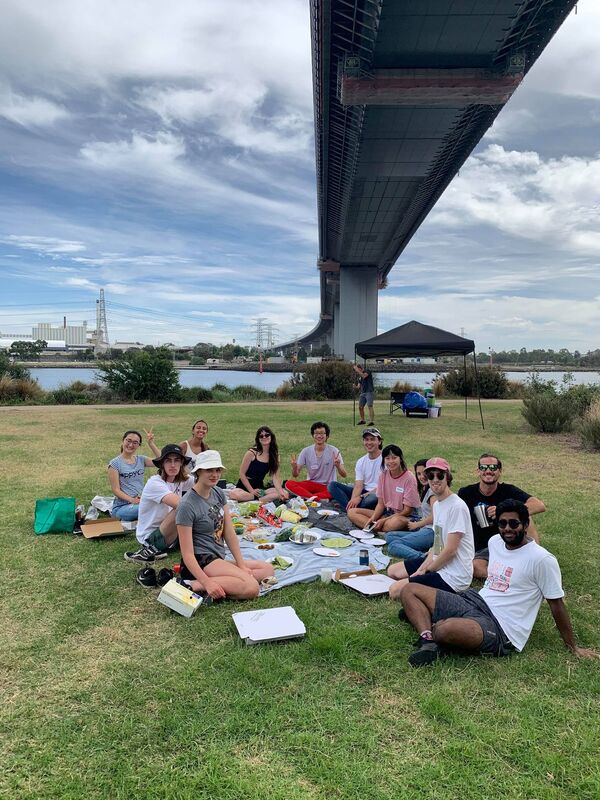|
Every piece of plastic ever produced, unless burnt, is still around.1 If you think about it, that’s a lot of plastic (approximatively 8.3 billion metric tons!).2 That’s why last Sunday, on Clean Up Australia Day, the Victorian Environmental Law Student Network (more affectionately known as VELSN) partnered with the Australian Conservation Foundation and volunteers including Federal and Victorian MPs to clean-up the river mouth of the Yarra, a known catchment for river pollution. Standing under the bridge in Westgate Park on a beautiful Sunday morning, it was easy to forget that we were gathered to pick up trash along the Yarra River. From where we stood, the park was pristine, with people enjoying the morning sun and taking walks along the river. And yet, we would soon have collected a whopping 71Kg of waste in less than two hours. At points, it felt as there was more styrofoam than sand, bottle caps than shells, plastic soy sauce fishies than Bass, Grayling or catfish combined. There was a myriad of other single use plastic items coming from the streets, including hazardous used syringes. That was extremely depressing and heartbreaking. Despite the grimness of finding so much waste in such a small area, there is much within the waste management sphere that we can be hopeful about. We noticed very few single use plastic bags (compared to previous years). And contrary to some pundits, these have largely not been replaced with the re-usable ones. This is proof of the positive impact corporate and consumer efforts can have on the environment, if just we try. The Victorian government is also currently considering implementing a state-wide Container Deposit Scheme (CDS)3 where community groups and businesses can collect plastic bottles, cans and containers in return for a small payment. This, along with improving the household bin system and overhauling the recycling system, is part of the government’s $300 million plan to manage waste more effectively. The Federal government on the other hand has just released their National Plastics Plan,4 which seeks to phase out problematic plastics,5 such as Styrofoam, by the end of 2022. Unfortunately, at this stage, the Plan relies on industry participation and is not regulated by legislation. However the government has indicated it is willing to consider regulating in the future. Another important step taken by the Australian Government is the harmonisation of the (very inconsistent) kerbside recycling collection in the different councils and States. Although there is much work to be done and there are serious issues, both legal and practical, that need to be addressed, the actions taken by both government and our society thus far are promising. Let’s continue to hope and demand that, as with the eradication of single use plastic bags, we can continue to take decisive action towards creating a waste-free circular economy for a more sustainable and environmentally-friendly Australia. And don’t forget: as a consumer, you play a critical role in Australia’s plastics challenge. The products we choose to buy and how we dispose of them determine the amount of plastic that we generate, recycle and waste. So… Rethink—Refuse—Reduce—Re-choose—Repair—Reuse and at last, Recycle properly! -The ’21 VELSN Committee 1 E.g. https://www.greenpeace.org/international/story/7281/every-single-piece-of-plastic-ever-made-still-exists-heres-the-story/. 2https://www.nationalgeographic.com/science/article/plastic-produced-recycling-waste-ocean-trash-debris-environment; https://www.sciencedaily.com/releases/2017/07/170719140939.htm. 3 https://www.vic.gov.au/container-deposit-scheme. 4 https://www.environment.gov.au/protection/waste/plastics-and-packaging/national-plastics-plan. 5 Plastic per se is not inherently a bad invention. Suffice to say that its replacement of ivory in the making of keyboards has spared thousands of elephants from being hunted for their precious tusks. It also allows us to preserve food longer, reducing food waste. Our problem with plastic is how we dispose of it, and until now, we have done a terrible job, with over 91% of the 8.3 billion tonnes of plastic ever produced having gone to “waste” - a concept unheard of in Nature, where nothing goes to “waste”. As a consequence of our poor disposal management of plastic, paradoxically, perhaps more elephants have died ingesting plastic than they would have done if hunted to make keyboards.
0 Comments
Your comment will be posted after it is approved.
Leave a Reply. |
About this pageSee this page for VELSN member submissions, interviews with leading environmental law academics, legal practitioners and commentators, and developments in environmental law. Archives
March 2021
Categories |

 RSS Feed
RSS Feed
